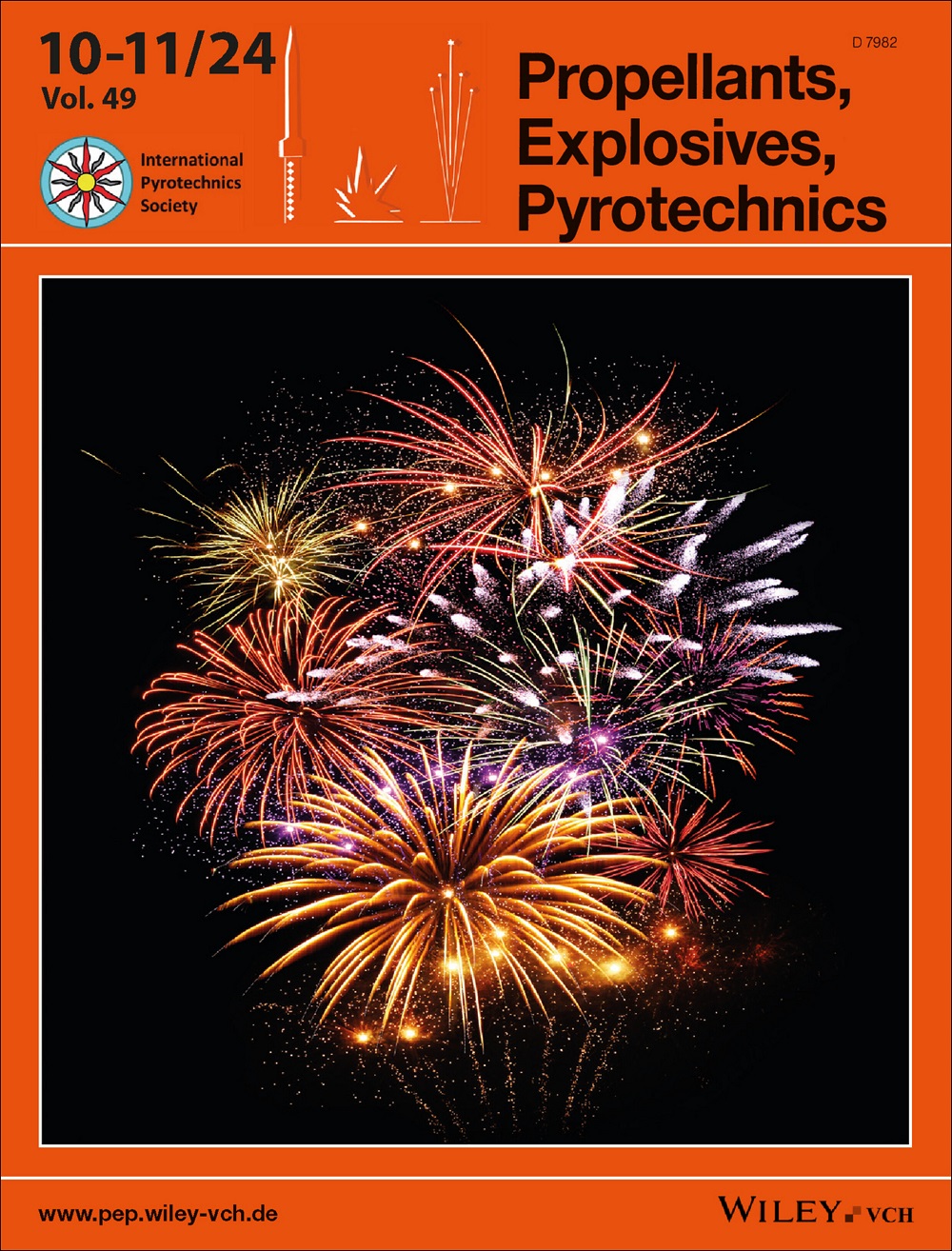Hygroscopicity of nitrocellulose with different nitrogen content
IF 2
4区 工程技术
Q3 CHEMISTRY, APPLIED
引用次数: 0
Abstract
Research on the hygroscopic behavior of NC is essential because it affects the mechanical properties, combustion properties, and safe storage of NC-based products. In this study, Fourier transform infrared spectroscopy (FTIR), X-ray diffraction (XRD), and scanning electron microscopy (SEM) are used to characterize the chemical structure, crystal structure, and microscopic morphology of NC, respectively. The moisture adsorption isotherms of NC fibers with different nitrogen content are determined by dynamic vapor sorption (DVS) and fitted with Hailwood-Horrobin (H−H) and Guggenheim-Anderson-de Boer (GAB) models. The specific surface area and surface energy of NC are also measured by inverse gas chromatography (IGC). The results show that as the nitrogen content of NC increases, the intensity of the −OH characteristic absorption peak is weakened, the crystallinity does not change much, the number of cracks and pores on the NC fiber surface increases, and the equilibrium moisture content (EMC) of the NC decreases in general. In addition, the fitting results based on the H−H and GAB models show that, under low humidity conditions, the EMC value of NC is determined by the adsorbed water content of the monolayer, which is mainly related to the −OH content in NC. However, with the increase of humidity, the EMC value of NC is gradually determined by the multilayer adsorbed water content, which is influenced by both the nitrogen content and the fiber cleavage structure. Meanwhile, the IGC results show that the surface energy of the NC consists mainly of the dispersive surface energy (values >46 mJ m−2), with the specific surface energy contributing approximately 25 mJ m−2. The total surface energy of NC and the bonding strength between NC molecules and water molecules decrease with increasing nitrogen content.

不同含氮量硝化纤维的吸湿性
由于数控吸湿行为会影响数控产品的机械性能、燃烧性能和安全储存,因此对数控吸湿行为的研究至关重要。本研究采用傅立叶变换红外光谱(FTIR)、X 射线衍射(XRD)和扫描电子显微镜(SEM)分别对 NC 的化学结构、晶体结构和微观形态进行表征。采用动态蒸汽吸附法(DVS)测定了不同含氮量 NC 纤维的水分吸附等温线,并用 Hailwood-Horrobin (H-H) 模型和 Guggenheim-Anderson-de Boer (GAB) 模型进行了拟合。此外,还通过反气相色谱法(IGC)测量了 NC 的比表面积和表面能。结果表明,随着 NC 含氮量的增加,-OH 特征吸收峰的强度减弱,结晶度变化不大,NC 纤维表面的裂缝和气孔数量增加,NC 的平衡含水量(EMC)总体上下降。此外,基于 H-H 和 GAB 模型的拟合结果表明,在低湿度条件下,NC 的 EMC 值由单层吸附水含量决定,而单层吸附水含量主要与 NC 中的 -OH 含量有关。然而,随着湿度的增加,NC 的 EMC 值逐渐由多层吸附水含量决定,而多层吸附水含量则同时受到氮含量和纤维裂解结构的影响。同时,IGC 结果表明,NC 的表面能主要由分散表面能构成(值为 46 mJ m-2),比表面能大约占 25 mJ m-2。随着氮含量的增加,NC 的总表面能以及 NC 分子与水分子之间的结合强度都在下降。
本文章由计算机程序翻译,如有差异,请以英文原文为准。
求助全文
约1分钟内获得全文
求助全文
来源期刊

Propellants, Explosives, Pyrotechnics
工程技术-工程:化工
CiteScore
4.20
自引率
16.70%
发文量
235
审稿时长
2.7 months
期刊介绍:
Propellants, Explosives, Pyrotechnics (PEP) is an international, peer-reviewed journal containing Full Papers, Short Communications, critical Reviews, as well as details of forthcoming meetings and book reviews concerned with the research, development and production in relation to propellants, explosives, and pyrotechnics for all applications. Being the official journal of the International Pyrotechnics Society, PEP is a vital medium and the state-of-the-art forum for the exchange of science and technology in energetic materials. PEP is published 12 times a year.
PEP is devoted to advancing the science, technology and engineering elements in the storage and manipulation of chemical energy, specifically in propellants, explosives and pyrotechnics. Articles should provide scientific context, articulate impact, and be generally applicable to the energetic materials and wider scientific community. PEP is not a defense journal and does not feature the weaponization of materials and related systems or include information that would aid in the development or utilization of improvised explosive systems, e.g., synthesis routes to terrorist explosives.
 求助内容:
求助内容: 应助结果提醒方式:
应助结果提醒方式:


